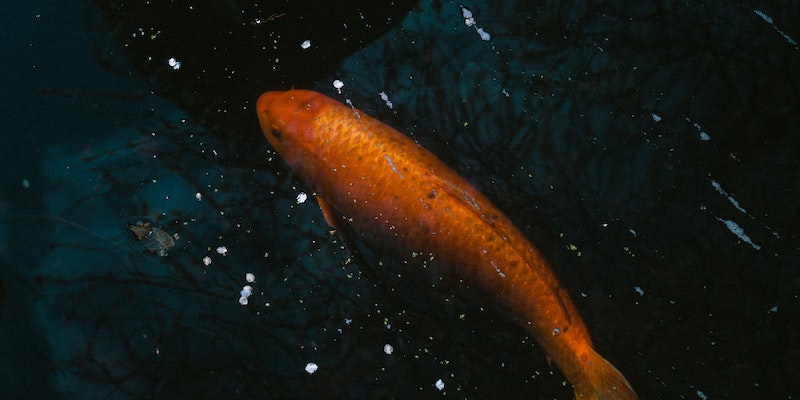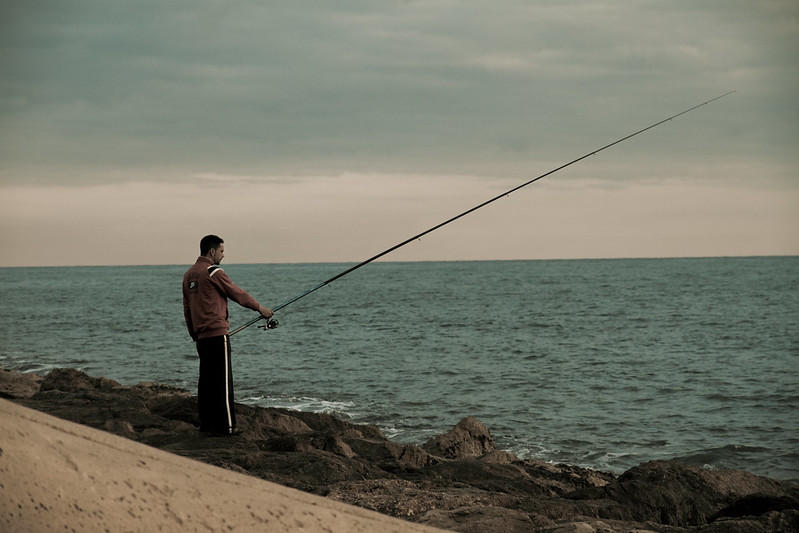
Under the calm, clear waters of New Zealand lie some of the most important fish species in the country. They are the source of jobs for thousands of people, providing a vital part of the economy. But, how much do we really know about these fish species and the changes they are facing? From the majestic snapper to the hardy hapuka, this article dives into the truths about New Zealand’s top fish species and their future.
Overview of New Zealand’s Top Fish Species
New Zealand has a diverse and abundant marine life, with numerous popular fish species. These species have been around for thousands of years and remain popular among anglers today. The most common and sought-after species include Snapper, Groper, Hapuku, Kingfish, and Tarakihi. All of these species have their own unique characteristics, preferred habitats, and sizes. Knowing more about the top species can provide insight into the entire New Zealand marine ecosystem.
Snapper is one of the most commonly caught fish off the coast of New Zealand. It is greenish-brown in color with a silvery hue, and can reach up to 14 lbs in weight. Snapper prefer to live near coral reefs or rocky outcrops and feeds on crabs, squid, octopus, and other small organisms found in the ocean depths. They are also known for their fighting spirit when hooked by anglers.
Groper is another popular species in New Zealand and can be found living close to reefs where it preys on smaller fish. This species can grow up to an impressive 60 lbs in weight and is a favorite among recreational fishermen due to its size and strength. Some may also choose to release them after capture as they are considered as important components of the marine ecosystem due to their role as predators.
Hapuku is an iconic deep-sea dweller that lives at depths up to 700 m below the ocean surface. This species has long been revered by locals as ‘the king of fish’ due to its size and elusive nature – some specimens have been recorded weighing over 100 lbs! Hapuku feed mainly on small benthic organisms such as crustaceans and cephalopods found in the deep waters.
Kingfish are another popular sought-after fish species off the New Zealand coast due to their strong fighting ability and stunning colors – they are light blue or yellow on top and silver on the underside with a yellow tail fin. They mostly feed on smaller fish that are found over sandy bottoms or near rocky reefs throughout New Zealand’s waters.
Lastly, Tarakihi is a tasty white fleshy fish that exhibits bright blue-green colouration with darker blue stripes along its sides; it is a common catch throughout New Zealand’s waters due to its abundance and preference of living close to the shoreline rocks or reefs. Tarakihi feed mainly on planktonic organisms
Fishing and its Impact on New Zealand’s Top Fish Species
The effects of fishing on New Zealand’s top fish species are far-reaching. Overfishing is a major threat to the health of New Zealand’s fish species populations, as it depletes their numbers faster than they can be replenished – essentially hastening their extinction. The results of this can be seen in the decrease in certain species such as snapper and kingfish, which have seen dramatic declines in recent years due to overfishing. Unsustainable fishing methods can also have a devastating impact on the future of New Zealand’s marine life, particularly those reliant on specific habitats. Longline fishing, which employs baited hooks attached to long lines or nets, has been found to threaten several species including endangered seabirds, sharks and turtles. This type of fishing also increases bycatch – the accidental capture of non-target animals that are often harmed or killed by incidental contact with baited hooks or nets.
However, there are ways to reduce the negative impacts of fishing on New Zealand’s top fish species. For instance, recreational and commercial fishing both play a role in the health and population size of these species, but they must be done responsibly with sustainable regulations in order to ensure that they remain healthy into the future. Therefore, it is essential that all forms of fishing adhere to carefully managed catch limits and other regulations designed to protect these important species. Additionally, initiatives such as Marine Protection Areas can help protect vulnerable fish populations from over-exploitation. These measures, combined with careful monitoring of population levels and careful management of these species’ habitats, will help ensure that New Zealand’s top fish species remain abundant for generations to come.
Climate Change and its Impact on New Zealand’s Top Fish Species
New Zealand’s unique geography and location in the South Pacific Ocean means that its marine ecosystems are especially at risk from the effects of climate change. Warmer ocean temperatures across this region have already caused considerable changes in the ocean environment, leading to a disruption of habitats for many of New Zealand’s top fish species. This could include everything from reduced oxygen levels to a decrease in available food sources which would have an undeniable impact on the populations of these species. What’s more, an increase in ocean acidity has also been shown to cause considerable stress to some fish species, further reducing their numbers.
Rising sea levels are also a significant concern when it comes to assessing the impact of climate change on New Zealand’s top fish species. This is due to the threat that they pose to some of New Zealand’s coastal areas, as rising waters could potentially alter the local aquatic environment and make it unable to support certain fish species. Furthermore, changes in the seasonal weather patterns could make it difficult for certain fish species to adjust their behavior and migration patterns accordingly, making them much more vulnerable than before.
Together, these various impacts of climate change suggest that there will be a drastic change in the populations of New Zealand’s top fish species if current trends continue. Therefore, it is absolutely essential that we properly understand these changes and their potential consequences so that our fisheries and aquaculture industries can plan accordingly for any future challenges that may arise. With proper attention and care, hopefully we can ensure that these iconic New Zealand fish populations remain healthy and vibrant for years to come.
Examining Population Changes of New Zealand’s Top Fish Species
It is important to understand the population changes of New Zealand’s top fish species in order to gauge the health of marine life in the country. To this end, researchers have been monitoring the numbers of New Zealand’s top fish species for years, and their findings offer insight into how populations are changing over time.
For instance, commercial fishing has had a significant impact on the population numbers of some popular species, such as snapper and trevally, in New Zealand. Indeed, recent reports suggest that commercial fishing accounts for up to 80% of all human-induced mortality of these two species in New Zealand’s waters. This means that without adequate management and enforcement of restrictions, it can be difficult for these species to rebound once they have been heavily fished out by humans.
In addition to commercial fishing, changes in climate have also had an effect on certain species’ population numbers, such as yellow-eyed mullet, moki, and blue cod, in New Zealand. It is believed that rising temperatures or other environmental shifts could be influencing the number of offspring these fish produce and/or their longevity in the wild – both of which would have a great effect on populations.
Moreover, understanding these population changes can help us better protect and manage New Zealand’s marine life going forward. By being aware of how populations are shifting and what factors may be influencing them, we can develop more effective conservation plans that focus on preserving areas where these fish live as well as enforcing regulations for commercial fishing so that vulnerable populations do not decline further over time. Such information helps us to better understand the dynamics of New Zealand’s marine ecosystems, allowing us to make informed decisions about how best to protect our precious wildlife.
Impact of New Zealand’s Top Fish Species on the Future of Marine Life
The impact of New Zealand’s top fish species on the future of marine life is uncertain, however it is clear that their populations have been declining in recent years due to overfishing, pollution, and other human activities. Overfishing poses a significant threat to many fish species in New Zealand and can cause permanent damage to the habitat of some species if not managed properly. Pollution from human activities has also affected many of New Zealand’s top fish species, leading to declines in population health. Furthermore, climate change has posed an even greater threat to these native species, leading to decreased food availability and disruptions in the marine food web. Thus, the long-term effects of these factors on New Zealand’s top fish species could have devastating impacts on their future survival.
If measures are not taken soon, some of New Zealand’s top fish species may vanish entirely in the coming years. To prevent this from happening, conservation efforts must be put into place before it is too late. To start off with, catch limits should be enforced in order to prevent overfishing and ensure sustainable populations of New Zealand’s top fish species. Additionally, Marine Protected Areas (MPAs) should be established around key habitats for these species to provide safe havens for them to reproduce and grow without human interference. Furthermore, existing regulations on fishing practices should be strictly enforced to protect against illegal fishing practices that can further deplete certain fish populations.
Finally, educating the public about sustainable seafood consumption will also be important in ensuring a healthy future for New Zealand’s top fish species. By showing people the importance of buying only sustainably-caught seafood, we can make sure that their favorite local fish species are here for generations to come. The future of New Zealand’s marine life depends on our collective commitment to conserving these valuable resources. Together, we can ensure that our beloved native fish species remain healthy and abundant for years to come.
The truth about New Zealand’s top fish species is that they have been severely impacted by human activities, such as unsustainable fishing and climate change. This has caused population declines in many species and could have dire consequences for the future of New Zealand’s marine life. While there are efforts being made to conserve and restore these species, it is important that we continue to take action to protect these species and their habitats in order to ensure their future and the future of New Zealand’s marine ecosystems.
 Under the calm, clear waters of New Zealand lie some of the most important fish species in the country. They are the source of jobs for thousands of people, providing a vital part of the economy. But, how much do we really know about these fish species and the changes they are facing? From the majestic snapper to the hardy hapuka, this article dives into the truths about New Zealand’s top fish species and their future.
Under the calm, clear waters of New Zealand lie some of the most important fish species in the country. They are the source of jobs for thousands of people, providing a vital part of the economy. But, how much do we really know about these fish species and the changes they are facing? From the majestic snapper to the hardy hapuka, this article dives into the truths about New Zealand’s top fish species and their future.

 Under the calm, clear waters of New Zealand lie some of the most important fish species in the country. They are the source of jobs for thousands of people, providing a vital part of the economy. But, how much do we really know about these fish species and the changes they are facing? From the majestic snapper to the hardy hapuka, this article dives into the truths about New Zealand’s top fish species and their future.
Under the calm, clear waters of New Zealand lie some of the most important fish species in the country. They are the source of jobs for thousands of people, providing a vital part of the economy. But, how much do we really know about these fish species and the changes they are facing? From the majestic snapper to the hardy hapuka, this article dives into the truths about New Zealand’s top fish species and their future.








